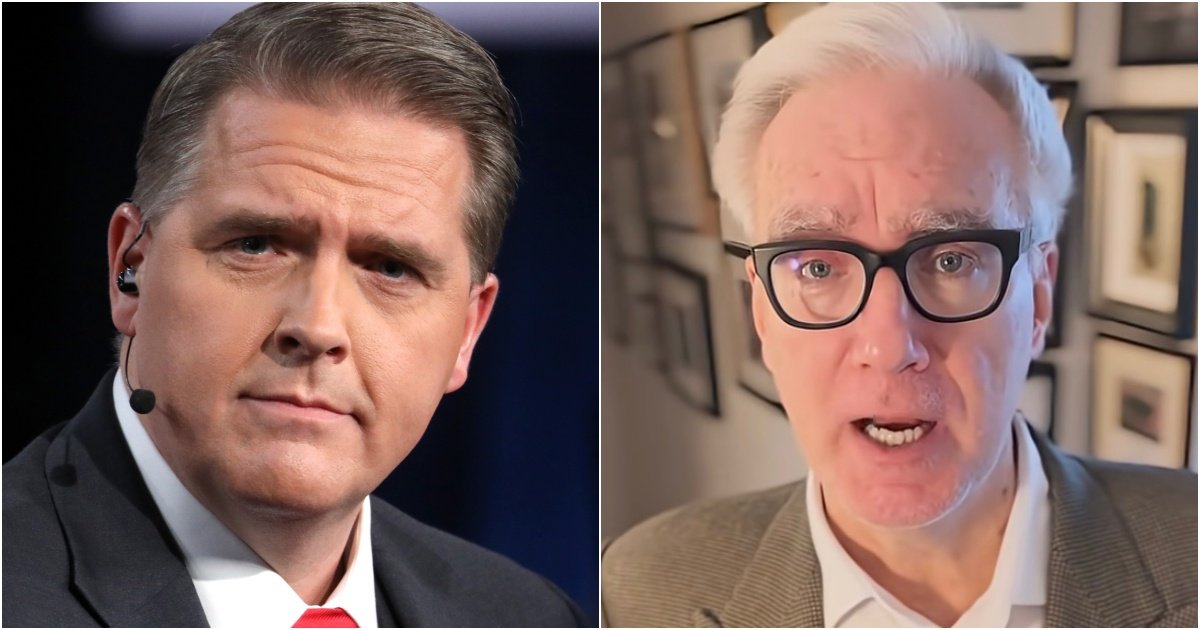| What: | The rollout of HealthCare.gov |
| When: | The website was launched as part of the Affordable Care Act in 2013. |
| Why it matters: | HealthCare.gov was meant to help users sign up for health insurance plans created under the legislation. The failed launch catalyzed a movement that would redefine how government implements technology and give rise to the creation of the U.S. Digital Service. |
Politics
How Healthcare.gov’s botched rollout led to a digital services revolution in government


USDS using new strategy to find data scientists
https://federalnewsnetwork.com/podcast/federal-drive-with-terry-gerton-podcast/usds-using-new-strategy-to-find-data-scientists/
The crash of HealthCare.gov in October 2013 sparked a nationwide conversation about how the federal government designs and launches online services to the public.
The website was launched as part of the Affordable Care Act, and was meant to help users sign up for health insurance plans created under the legislation. But the site was unable to handle the large volume of web traffic on the first day of its launch.
But the failure of Healthcare.gov didn’t just spark public outrage — it catalyzed a movement that would redefine how government implements technology, and give rise to the creation of the U.S. Digital Service.
Former USDS Administrator Mina Hsiang served on an ad hoc “tech surge” team in the immediate aftermath of the HealthCare.gov crash.
“What we discovered was there were many people working across different parts of healthcare.gov who knew there was a big problem; who were not really surprised at the outcome. They would tell us ‘We knew that this was going to happen.’ So then the question is- how do you ensure that people with detailed understanding of what is going on have an appropriate voice and are empowered? How do we make sure that leaders are asking the right questions and hearing from the right people? Because that’s clearly not what was happening. It became clear that incentives are not correctly set up for it, and also there weren’t the people with the right expertise in key leadership positions. So our team was a key part of the near-term solution for that.” Hsiang said.
Code for America CEO Amanda Renteria, who was working in the Senate at the time, said the rocky rollout underscored a disconnect between policy and implementation.
The Affordable Care Act, she said, “was this major win for this administration, and then it was hit by this implementation problem that made it very clear that implementation matters.”
“So much of implementation is reliant on how we deliver services, and that is reliant on our infrastructure and technology,” Renteria said.
About a year after the HealthCare.gov crash, the White House launched the U.S. Digital Service, a tech team within the Executive Office of the President.
“In the beginning, the USDS work was a lot like being an EMT. We arrived when something was in crisis and could diagnose and stabilize the situation and take things that were struggling and make them dramatically more successful,” Hsiang said.
But over time, USDS became less reactive and took a more proactive approach to digital services.
“I, during my tenure, worked to continue to evolve the function of USDS, because ideally, you stop having so many emergency situations. You start saying, ‘OK, what would good look like?’” Hsiang said. “Not just rescue, but how can we actually help agencies and the federal government, writ large, understand what true technology-enabled, user-focused, human-focused execution looks like? And that requires expertise in all of these fields – product management, engineering, design, but also contracting.”
USDS started out as a crisis response team to address service delivery challenges. But over time, USDS helped more than 30 agencies deliver a better digitally-enabled experience to the public.
At the height of the COVID-19 pandemic, USDS launched a vaccine finder tool.USDS recently helped the IRS develop Direct File, a free online tax preparation that was piloted in a dozen states in 2024 and expanded to 25 states in 2025.
“When you’re testing things out in government, the scale is so big, the scrutiny is really high, and so the need to be thoughtful is incredibly important, and it’s lasted. When we were rolling out Direct File, people were like, how can this not be like HealthCare.gov?” Renteria said.
‘You can’t do agile in a waterfall world’
Healthcare.gov’s failure exposed the dangers of waterfall-style development, a method of long planning cycles followed by a single, large-scale release. The recovery process for Healthcare.gov underscored how agile software development could work in government.
USDS and the General Services Administration’s 18F tech office began institutionalizing modern development practices — iterative testing, user research and accessibility by design.
“It really challenged traditional wisdom at the time,” said Lindsay Young, a former 18F administrator and founding member of the tech office. “It helped redefine what was safe to do. It turned into a success. I think that really gave wind in the sails for the way forward.”
Jen Pahlka, former U.S. chief technology officer and founder of Code for America, who helped found USDS, said the botched HealthCare.gov rollout also revealed deeper structural problems.
“You can’t do agile in a waterfall world,” Pahlka said. “You could spend a lot of political capital passing a huge, important bill, and that might not matter, if you hadn’t thought about and protected the space for implementing that bill. It’s not just the software that has to be agile. Everything around it — funding, management, contracting — needs to change, too.”
Pahlka said USDS succeeded in planting the seeds of a better way of working, even if it wasn’t always visible.
“What used to be something that USDS did for agencies is now just something agencies do,” she said. “It’s happening behind the scenes, in the dogs that don’t bark — the things that work, that don’t make headlines.”
Pahlka said the government’s ability to deliver benefits and services also has a direct impact on public trust in government.
“People are starting to have delightful experiences, doing things like renewing their passports,” she said. “They assume they’re going to stand in line, and then they don’t have to. That changes how people think about government.”
Rise of DOGE
The work of USDS has changed substantially under the Trump administration. President Donald Trump, soon after taking office in January, signed an executive order creating the Department of Government Efficiency (DOGE), and renamed USDS as the “U.S. DOGE Service.” USDS lost many of its previous employees with the rise of DOGE.
USDS leaders have always championed a culture of cutting through bureaucracy. But the pace of DOGE’s changes gives some pause.
“When people move fast and things break in government, it doesn’t just have real harm to people, but it has a lasting impact on trust in public institutions,” Renteria said.
Young stressed that those working on digital tools within the federal government “have a responsibility to the security and privacy of the public.”
“It’s just so unnecessary to rush things out the door without testing or basic security,” she said.
Amid all these changes, the ideas seeded by USDS endure.
“A lot of the best work is going to be done at the state and local government level,” said Amy Paris, a former USDS team lead. “Where USDS is going to live on is in organizations that are out there actively trying to provide services for the American people.”
Young said the tools and playbooks developed at 18F and USDS continue to guide digital modernization efforts.
“People that we’ve never even met are able to use templates, are able to use best practices playbooks, and USDS put together a lot of good playbooks as well. That kind of knowledge we have just been working on preserving,” she said.
The post How Healthcare.gov’s botched rollout led to a digital services revolution in government first appeared on Federal News Network.
Politics
Black Lives Matter Activist in Boston Pleads Guilty to Federal Fraud Charges – Scammed Donors to Fund Her Lifestyle

Screencap of YouTube video.
A Black Lives Matter activist in Boston named Monica Cannon-Grant pleaded guilty to federal charges this week, admitting that she scammed donors and used their money to fund her own lavish lifestyle.
Cannon-Grant was previously held up as an admired figure. The city of Boston named her the Bostonian of the year at one point for her ‘social justice activism’ and she was even recognized by the Boston Celtics basketball team for her efforts.
She is now facing a minimum of two years in prison.
The New York Post reports:
BLM-linked activist admits conning donors to fund her lavish lifestyle
A once-celebrated Boston social activist has pleaded guilty to defrauding donors — including Black Lives Matter — out of thousands of dollars that she used as a personal piggy bank.
Monica Cannon-Grant, 44, pleaded guilty Monday to 18 counts of fraud-related crimes that she committed with her late husband while operating their Violence in Boston (VIB) activists group, according to the US Attorney’s Office in Massachusetts.
The activist scammed money — including $3,000 from a BLM group — while claiming it was to help feed children and run protests like one in 2020 over the murder of George Floyd and police violence.
Cannon-Grant also conned her way into getting $100,000 in federal pandemic-related unemployment benefits — which she used to pay off her personal auto loan and car insurance policy.
But she has now confessed to transferring funds to personal bank accounts to pay for rent, shopping sprees, delivery meals, visits to a nail salon — and even a summer vacation to Maryland.
Just amazing.
Monica Cannon-Grant stole from donors, scammed the government, and lived it up while preaching about oppression. BLM grift is the only nonprofit where fraud is part of the mission statement. https://t.co/ir3q9lqYrh
— Matthew Newgarden (@a_newgarden) September 23, 2025
BREAKING: BLM activist Monica Cannon-Grant pleads guilty to 27 fraud charges, misusing over $1M from Violence in Boston for personal gain. Echoes Sir Maejor Page’s $450K scam conviction. A wake-up call for nonprofit accountability. pic.twitter.com/N9vvD369gB
— (@pr0ud_americans) September 14, 2025
Here’s a local video report:
She should pay back every penny.
The post Black Lives Matter Activist in Boston Pleads Guilty to Federal Fraud Charges – Scammed Donors to Fund Her Lifestyle appeared first on The Gateway Pundit.
Politics
Keith Olbermann Backpedals Furiously With Apology for Threatening CNN’s Scott Jennings – Jennings Responds (VIDEO)

As the Gateway Pundit reported yesterday, former MSNBC host and generally unhinged leftist Keith Olbermann, appeared to threaten CNN’s conservative pundit Scott Jennings on Twitter saying, ‘You’re next motherf**ker.’
Well, Olbermann may have gotten a phone call or a visit from the FBI because today he walked back those comments with a full-throated apology.
RedState has an update:
To quickly recap, Scott Jennings, a Salem Media Network radio host and conservative CNN political commentator, reacted to breaking news on Monday that Kimmel had been reinstated by tweeting, “So basically his employer suspended him for being an insensitive pr**k, and we don’t live in an authoritarian regime? Got it.”
This enraged Olbermann, who proceeded to tweet what many, including Jennings, perceived to be a threat. “You’re next, motherf**ker. But keep mugging to the camera.” Jennings tagged Patel and included a screengrab of the tweets in response.
Though the FBI hasn’t commented as to whether an investigation was launched, Olbermann ostensibly appears to have thought twice about what he tweeted and deleted, apologizing profusely in tweets posted on Tuesday and claiming what he wrote was “misinterpreted”:
See Olbermann’s tweet below:
I apologize without reservation to @ScottJenningsKY
Yesterday I wrote and immediately deleted 2 responses to him about Kimmel because they could be misinterpreted as a threat to anything besides his career. I immediately replaced them with ones specifying what I actually meant. pic.twitter.com/SPWLb73nEk
— Keith Olbermann (@KeithOlbermann) September 23, 2025
I oppose and condemn political violence, and the threat of it. All times are the wrong time to leave even an inadvertent impression of it – but this time is especially wrong
I should've acknowledged the deletion and apologized yesterday. I'm sorry I delayed.
— Keith Olbermann (@KeithOlbermann) September 23, 2025
Scott Jennings, always a class act, offered this hilarious response:
SCOTT JENNINGS: “Marking myself SAFE from that NUT, Keith Olbermann!” pic.twitter.com/EYZX6vm5Oh
— Dustin Grage (@GrageDustin) September 23, 2025
Keith Olbermann really needs help. The guy is just so out of control.
The post Keith Olbermann Backpedals Furiously With Apology for Threatening CNN’s Scott Jennings – Jennings Responds (VIDEO) appeared first on The Gateway Pundit.
Politics
Where is Lance Twiggs? Kirk Assassin’s Transgender Lover Has Vanished

 Charlie Kirk assassin Tyler Robinson and roommate Lance Twiggs
Charlie Kirk assassin Tyler Robinson and roommate Lance Twiggs
Charlie Kirk assassin Tyler Robinson lived with his transgender partner – a male-to-female trans named Lance “Luna” Twiggs.
The FBI used Robinson’s texts with his transgender partner to solidify that Robinson was the assassin. Lance Twiggs has not been charged with any crime; however, federal authorities are still investigating.
Last week, Utah authorities released the text exchange between Tyler Robinson and his transgender lover, Lance Twiggs, sent shortly after Kirk’s assassination.
Utah County District Attorney Jeff Gray announced seven charges against Charlie Kirk assassin Tyler Robinson. They will also be seeking the death penalty.
Robinson was charged with:
– Count 1: Aggravated murder (capital offense)
– Count 2: Felony reckless discharge of a firearm causing bodily injury
– Count 3: Felony obstruction of justice for hiding the firearm
– Count 4: Felony obstruction of justice for discarding the clothing he wore during the shooting
– Count 5: Witness tampering for asking roommate to delete incriminating messages
– Count 6: Witness temperating for demanding trans roommate stay silent, and not speak to police
– Count 7: Commission of a violent offense in the presence of a child
Jeff Gray released the chilling texts between Tyler Robinson and his “love” Lance Twiggs.
Read the text exchange here:
 Tyler Robinson texts with transgender lover Lance Twiggs / 1
Tyler Robinson texts with transgender lover Lance Twiggs / 1
 Kirk assassin Tyler Robinson texts with transgender lover Lance Twiggs / 2
Kirk assassin Tyler Robinson texts with transgender lover Lance Twiggs / 2
Lance Twiggs was reportedly cooperating with the FBI, however, according to the Daily Mail he has seemingly vanished.
“If [Lance Twiggs] ever comes back, it will be in a body bag,” a neighbor said to the Daily Mail. “That’s not a threat – I’m just saying that there are so many people who want a piece of him he’d be mad to show his face in public again. This was a generational event.”
The Daily Mail reported:
The Trans boyfriend of Charlie Kirk’s alleged assassin has fled their former lovenest – and locals tell the Daily Mail they never want to see him again.
Lance Twiggs, 22, was led away for questioning when police swooped on the smart three-bed condo he shared with accused gunman Tyler Robinson, 22.
Shaken neighbors say the part time plumber has not been back to the $320,000 property in St. George, Utah – one declaring: ‘Good riddance. I never want to see either of them again.’
His beaten-up Infinity compact is still parked in his space with his work gear tossed across the back seat and a sandwich wrapper and a drink on the front passenger seat.
Upstairs lights have been left on for more than a week and notes and Amazon packages are piling up outside the home owned by Twiggs’s devout Mormon family.
The post Where is Lance Twiggs? Kirk Assassin’s Transgender Lover Has Vanished appeared first on The Gateway Pundit.
-

 Entertainment6 months ago
Entertainment6 months agoNew Kid and Family Movies in 2025: Calendar of Release Dates (Updating)
-

 Entertainment3 months ago
Entertainment3 months agoBrooklyn Mirage Has Been Quietly Co-Managed by Hedge Fund Manager Axar Capital Amid Reopening Drama
-
Tech6 months ago
The best sexting apps in 2025
-

 Entertainment5 months ago
Entertainment5 months agoKid and Family TV Shows in 2025: New Series & Season Premiere Dates (Updating)
-

 Tech7 months ago
Tech7 months agoEvery potential TikTok buyer we know about
-
Tech7 months ago
iOS 18.4 developer beta released — heres what you can expect
-

 Tech7 months ago
Tech7 months agoAre You an RSSMasher?
-

 Politics7 months ago
Politics7 months agoDOGE-ing toward the best Department of Defense ever



